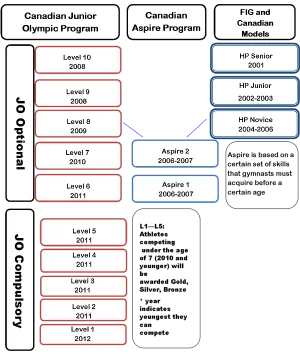Where I’m from (unfortunately not a country that brings home many Olympic medals, but anyway), children only start competing in the year they turn 9. They might do local competitions or smaller competitions organized between different clubs, but no regionals/nationals or whatsoever. Routines are not full routines yet for those levels, but vault timers or basics on bars. Even at 9, kids do not do full routines; on bars they do a routine using straps the first year, all the focus is on basics. Must say that, even though we do not perform too good internationally at the moment, they do seem to have the right skills by the time they are 15. Considered the fact we do not have home school programs and children under the age of 12 do usually only have 1 (four hour) practice a day, I don’t think it is a bad thing. In the last years more and more attention goes to the emotional wellbeing of the child in the first place, since to many gymnast ended up with mental health issues. I think it is a good thing; younger children have a normal school day and there is not a whole lot of pressure on the very young ones when it comes to competing.
Also; I agree that by the time they are 7/8, not getting a medal should not lead to tears, cries and broken egos. Also, I think al the individual apparatus medals are too much. Kids under the age of 7 should just have a great day and maybe get a diploma. Or, as my old gym used to do; hand out medals based on scores. So everyone deserved one, but for examp scores of 32 and below were bronze, 32-36 silver and 36 and up is gold. Of course, we all wanted a gold, which made us work really hard. But all to become better, not necessarily ‘the best.’
